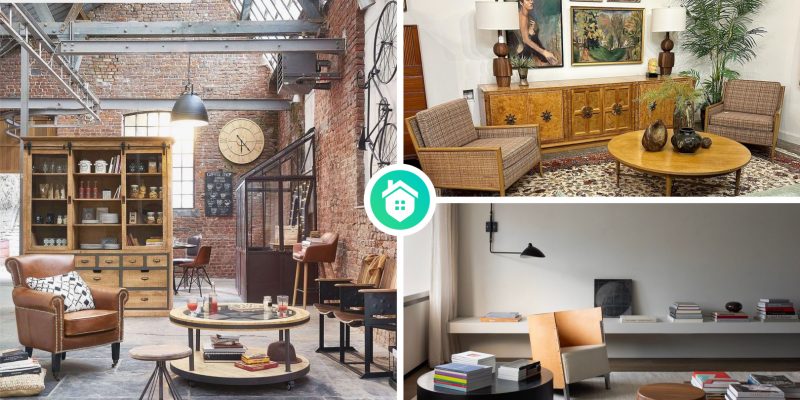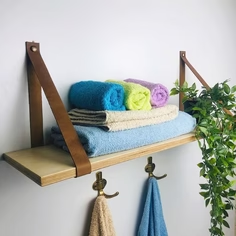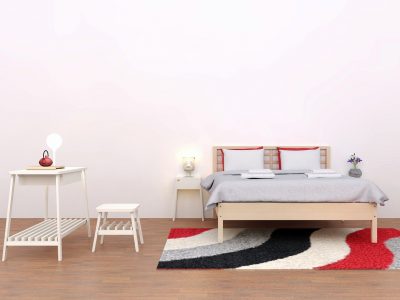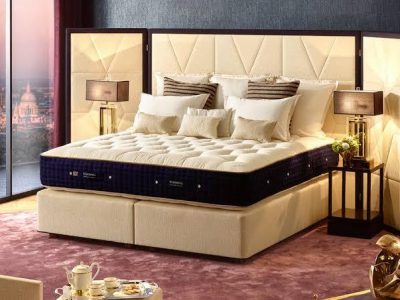Imagine interior design as a cake without frosting—sure, you’ve got the archways, built-ins, and wall finishes, but the real flavor comes from the furniture. It’s what gives a room its personality and vibe. With so many different furniture styles out there, it can be tricky to pick the perfect match for your home’s architecture and your own taste. From classic to funky Art Deco, here’s a rundown of eleven popular design styles to help you decide what suits you best.
Selecting the Perfect Furniture Design
The size of your space and your personal taste play a big role in choosing furniture styles for your home. Instead of chasing trends, focus on quality and functionality since furniture often sticks around for years. For smaller spaces, look for versatile pieces, while grand homes can handle heavier, statement furniture.
When shopping, pay attention to the styles that consistently catch your eye. If you’re drawn to clean lines and simplicity, contemporary or mid-century modern might suit you. If intricate details appeal to you, traditional or Victorian styles could be your thing. Don’t be afraid to mix and match styles—it can add character and make decorating more flexible.
Furniture Styles Worth Knowing
1. Traditional
Traditional furniture often showcases intricate detailing, ornate carving, brass accents, and crown molding, drawing inspiration from Western European motifs. This style includes oversized or overstuffed furniture with elegantly designed upholstery. It typically features 18th and 19th-century British and French designs, with many pieces crafted from solid dark woods like oak, mahogany, and walnut.
The timeless appeal of traditional furniture means you won’t easily grow tired of it. Plus, you can freshen up your space with small decor changes to keep it looking current.
2. Modern
Modern furniture styles emerged in the 20th century, particularly between 1900 and 1950, prioritizing function over elaborate design. Inspired by minimalism, these pieces are simple in design, neutral in color, yet highly functional. For instance, a modern coffee table might have a plain square top and straightforward legs, focusing on practicality rather than embellishment. Despite their simplicity, modern furniture pieces can still stand out when contrasted with more ornate styles.
Compared to traditional furniture, modern pieces tend to feature more geometric shapes rather than intricate curves. They appeal to those who appreciate clean lines and open spaces, often incorporating industrial materials such as metal, glass, concrete, and natural wood.
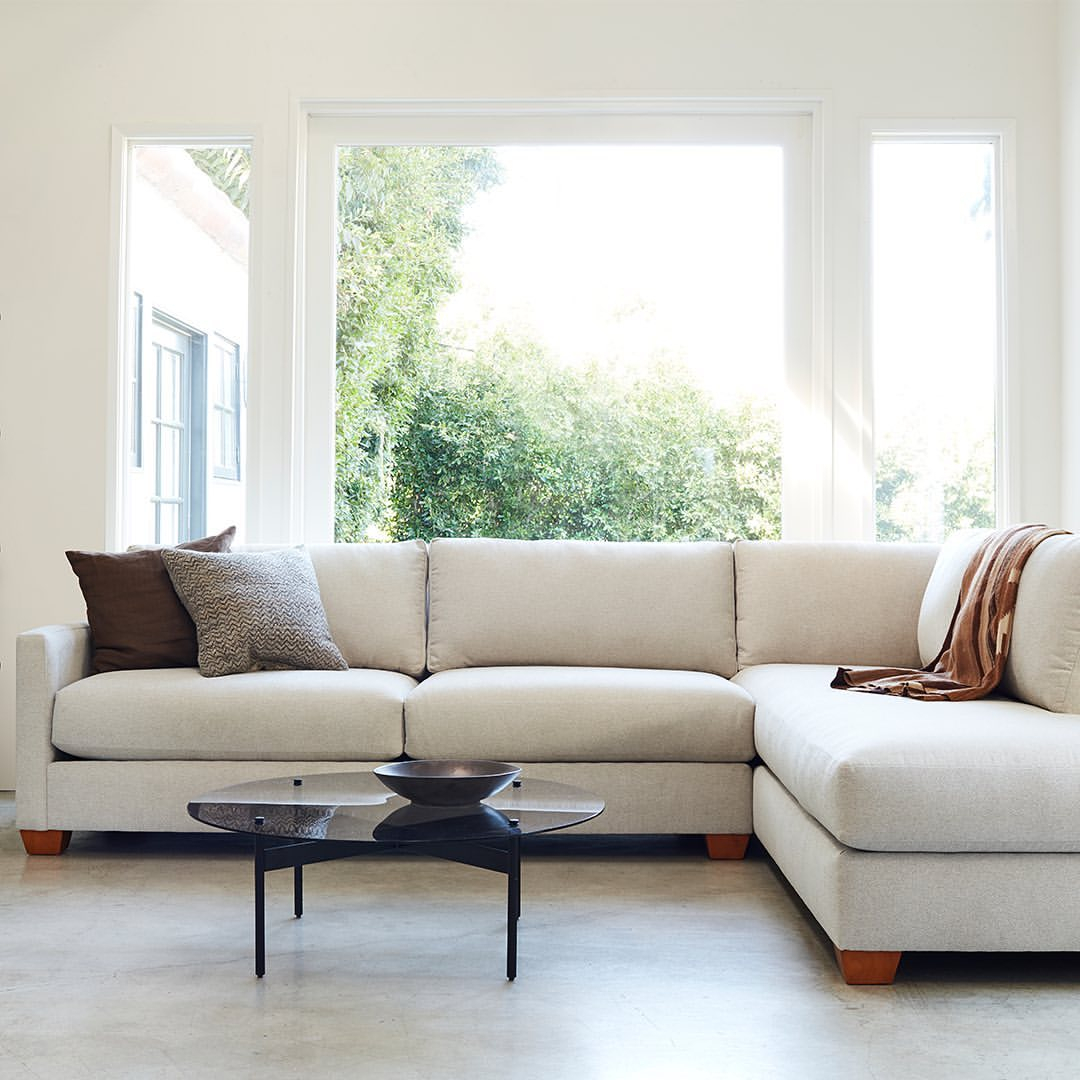
Sleek sophistication meets contemporary comfort. Elevate your space with the timeless allure of modern furniture design. Modern furniture from @apt2b
3. Transitional
The transitional style gained popularity in the 1950s by blending elements of traditional and modern furniture designs. This fusion creates a cohesive and refined aesthetic that adapts well to changing needs. You’ll find soft fabrics with diverse patterns, natural wood, mirrored or glass surfaces, and other premium materials that elevate simple designs to a luxurious level. Transitional furniture typically features clean lines and balanced proportions, with colors ranging from muted to vibrant, appealing to both genders.
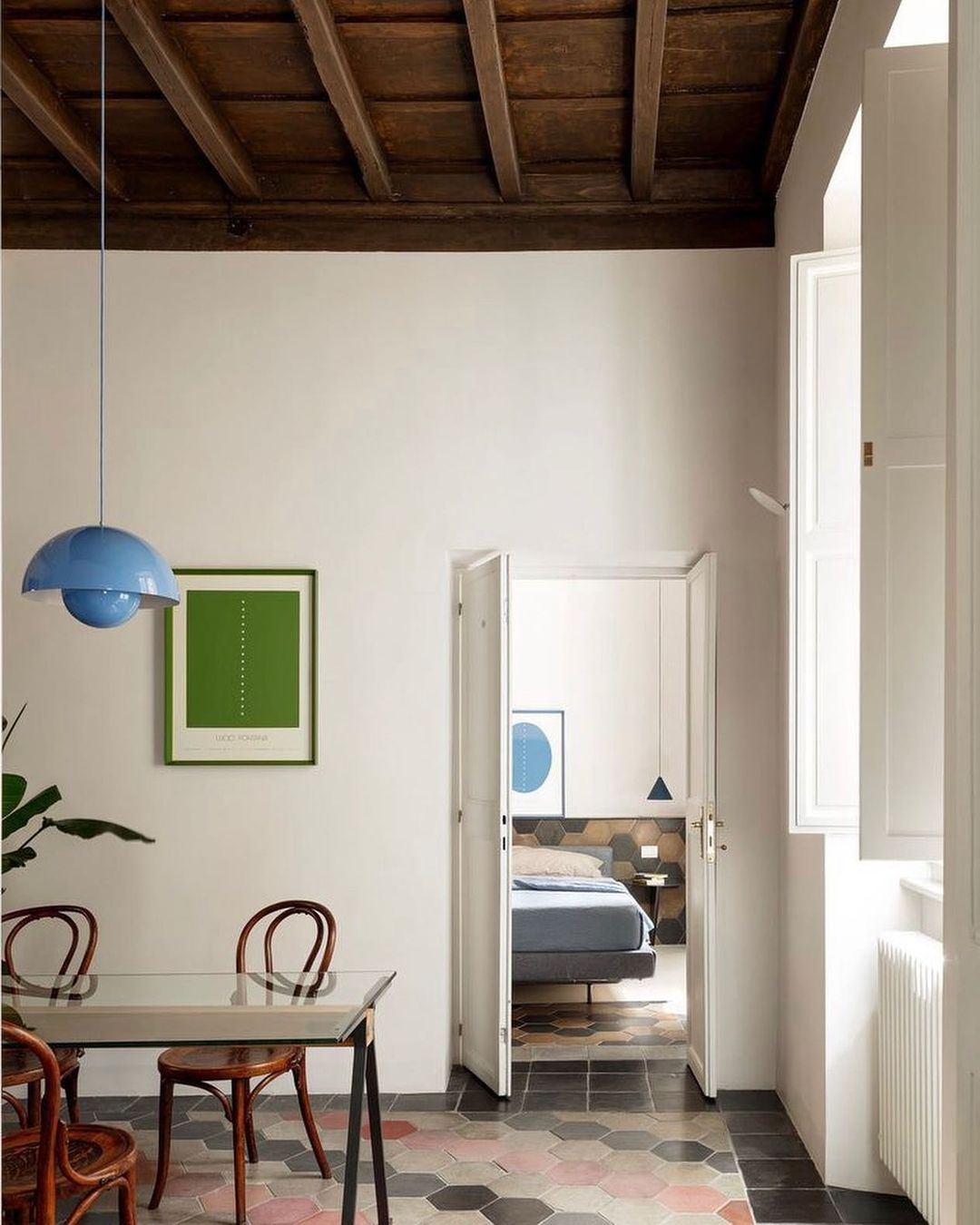
Blending classic charm with contemporary flair, transitional furniture seamlessly bridges the gap between timeless tradition and modern style in any home decor. Transitional furniture from @astrosoundscapes
4. Mid-Century Modern
Mid-century modern stands out easily with its distinctive features. While it exudes an all-American vibe, it draws inspiration from Scandinavian furniture. Characterized by minimalistic forms, clean lines, and a clutter-free appearance, this style emerged between 1933 and 1965, gaining iconic status from the 1950s to the 1970s. Furniture in this style is crafted from a mix of natural and synthetic materials, often fashioned into unconventional or geometric shapes with tapered legs. Wood, particularly teak, walnut, and oak, reigns supreme as the favored material for mid-century modern designs.
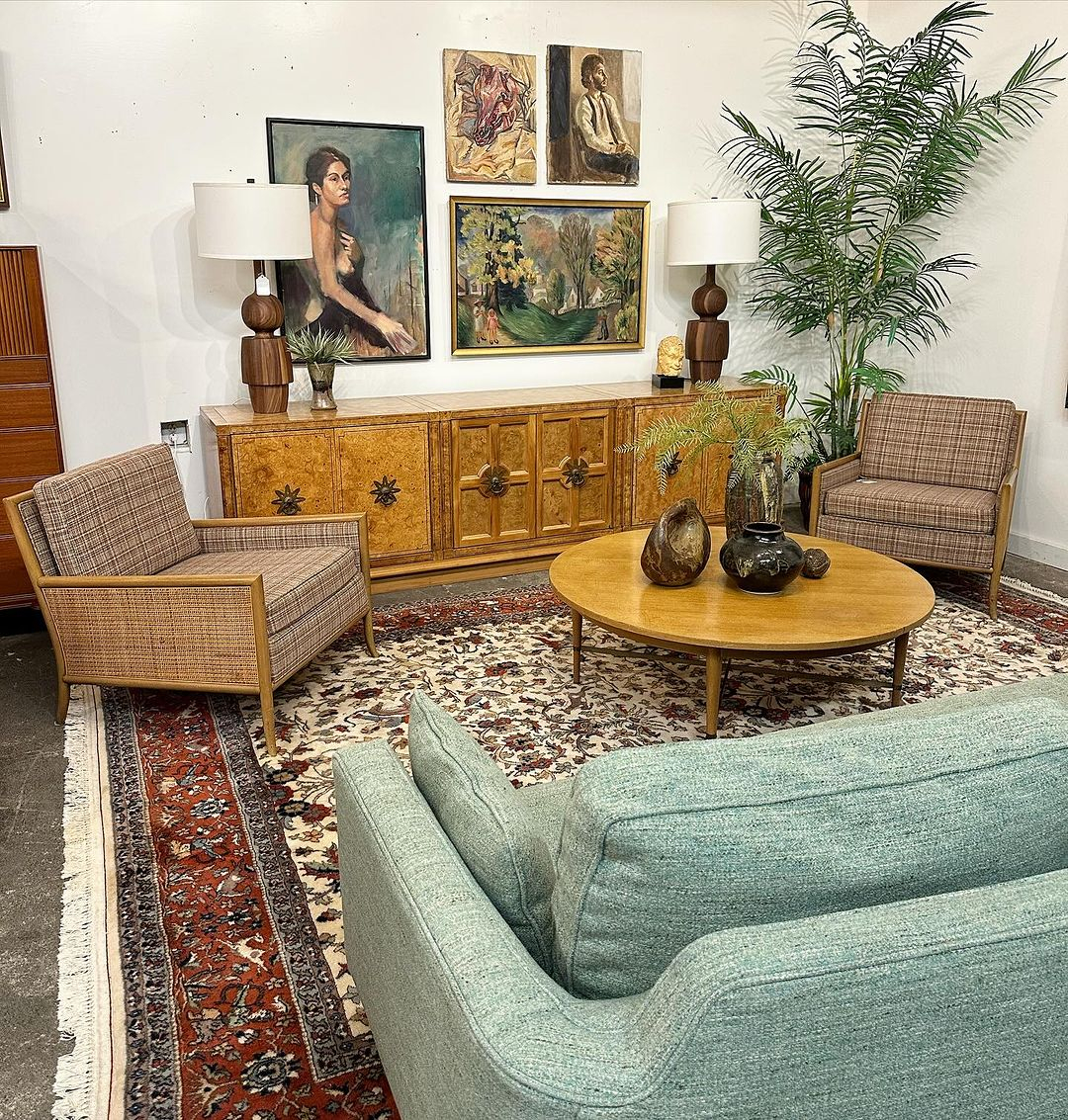
Embrace the iconic allure of mid-century modern furniture, where clean lines, organic shapes, and a touch of retro chic converge to create a timeless statement for your living space. Mid-century modern furniture from @mainstreetmodern
5. Victorian
Victorian furniture, popularized during Queen Victoria’s reign from 1840 to 1901, is characterized by its bulky appearance and intricate designs. This style often includes tufted fabrics and ornate patterns, with furniture adorned with carvings depicting foliage motifs such as crockets, trefoils, and quatrefoils. Known for its opulent and lavish aesthetic, Victorian furniture typically features upholstery in velvet or leather, complemented by solid frames crafted from walnut, mahogany, or rosewood.
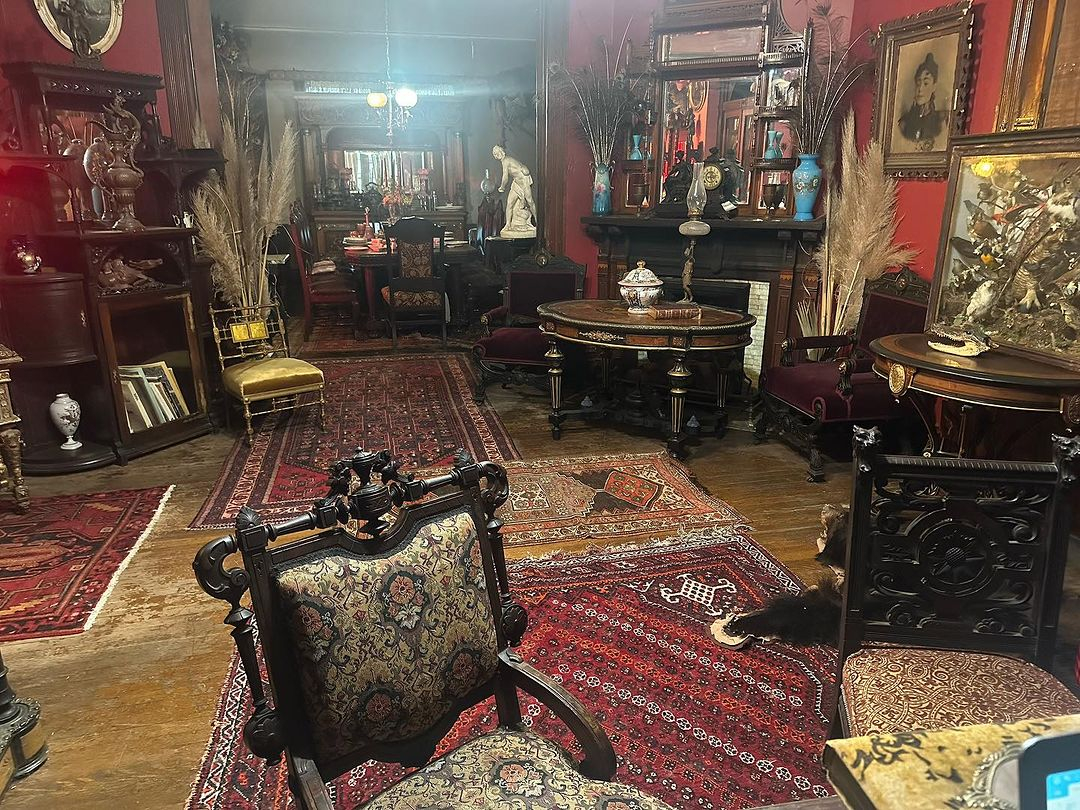
The opulent past with Victorian furniture, where intricate detailing, ornate carvings, and rich fabrics transport you to an era of timeless elegance and refined craftsmanship. Victorian furniture from @victorian_dfepot
6. Contemporary
While it can get a bit confusing, contemporary furniture and modern furniture aren’t the same in the world of interior design. Contemporary design draws inspiration from modernism but is more flexible, adapting to current trends without being tied to a specific era. Typically, you’ll find clean lines, smooth surfaces, and neutral color palettes. This style evokes a sense of floating in space or drifting on the sea, with its sleek, lightweight appearance and clutter-free aesthetic. Contemporary furniture often utilizes materials like metal, glass, and solid wood, and you’ll notice curved lines and minimal ornamentation as well.
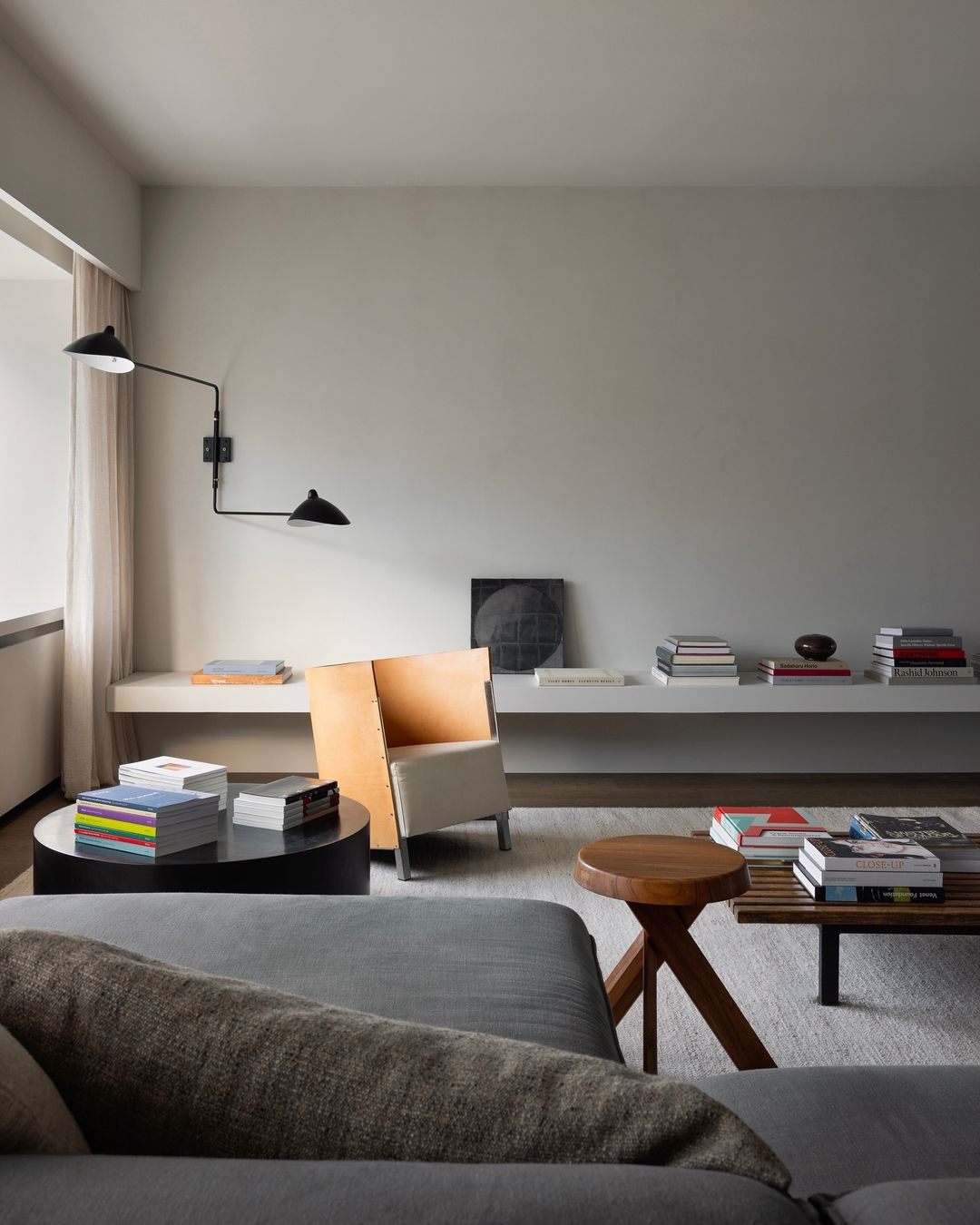
Where clean lines and innovative designs converge to create a chic and functional aesthetic for modern living. Contemporary furniture from @siva.space
7. Art Deco
Derived from the French term “art decoratifs,” the art deco furniture style flourished from the 1920s to the 1930s, remaining dominant until the end of World War II. Its enduring popularity is evident in vibrant neighborhoods like Miami’s South Beach and Manhattan’s Midtown. Art deco furniture complements architectural designs characterized by bold curves and geometric shapes. In furniture pieces, you’ll often find a fusion of triangles and curves, as well as intricate details like pearl inlay combined with wood. The use of natural materials such as wood and stone creates both a smooth tactile experience and visually textured appeal. Occasionally, this style is paired dramatically with elements like animal prints, velvet, and leather.
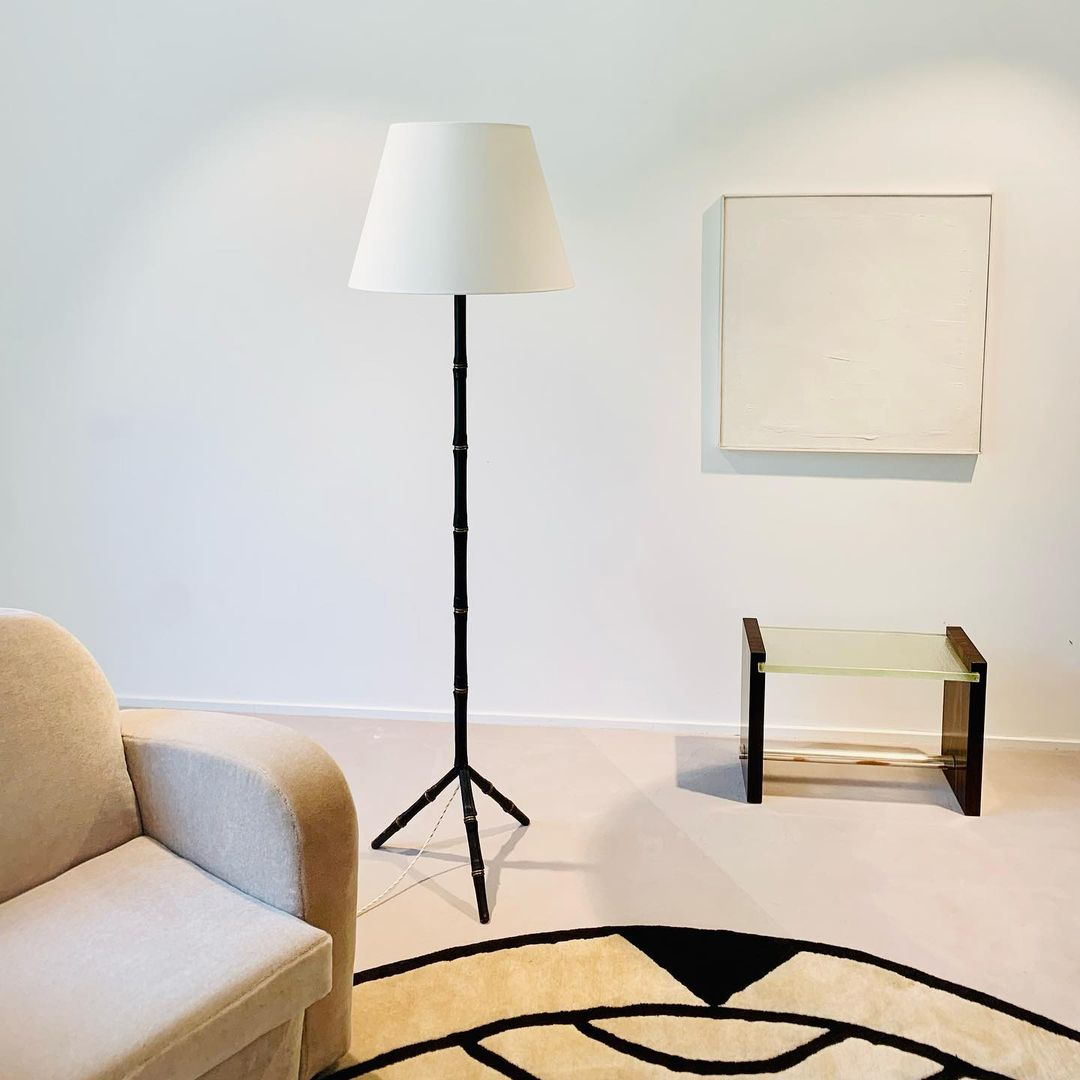
Art Deco furniture showcases bold lines, geometric patterns, and lavish materials, exuding an era-defining elegance and sophistication. Art deco from @tworoomszurich
8. Rustic
The rustic furniture style is straightforward—it’s like stepping into a cozy log cabin in the woods. Inspired by the movement to embrace natural materials, such as wood and leather, this style often leaves the raw cuts of the materials exposed. Typically handmade, rustic furniture pieces are one-of-a-kind.
Each piece bears its own unique characteristics, whether it’s from the use of milk paint, chip carvings, or brushwork. While some manufacturers blend mass-produced bases with organic wooden tops, genuine rustic furniture built to endure is still available. If you’re drawn to an earthy, antique feel, rustic furniture is an ideal choice.
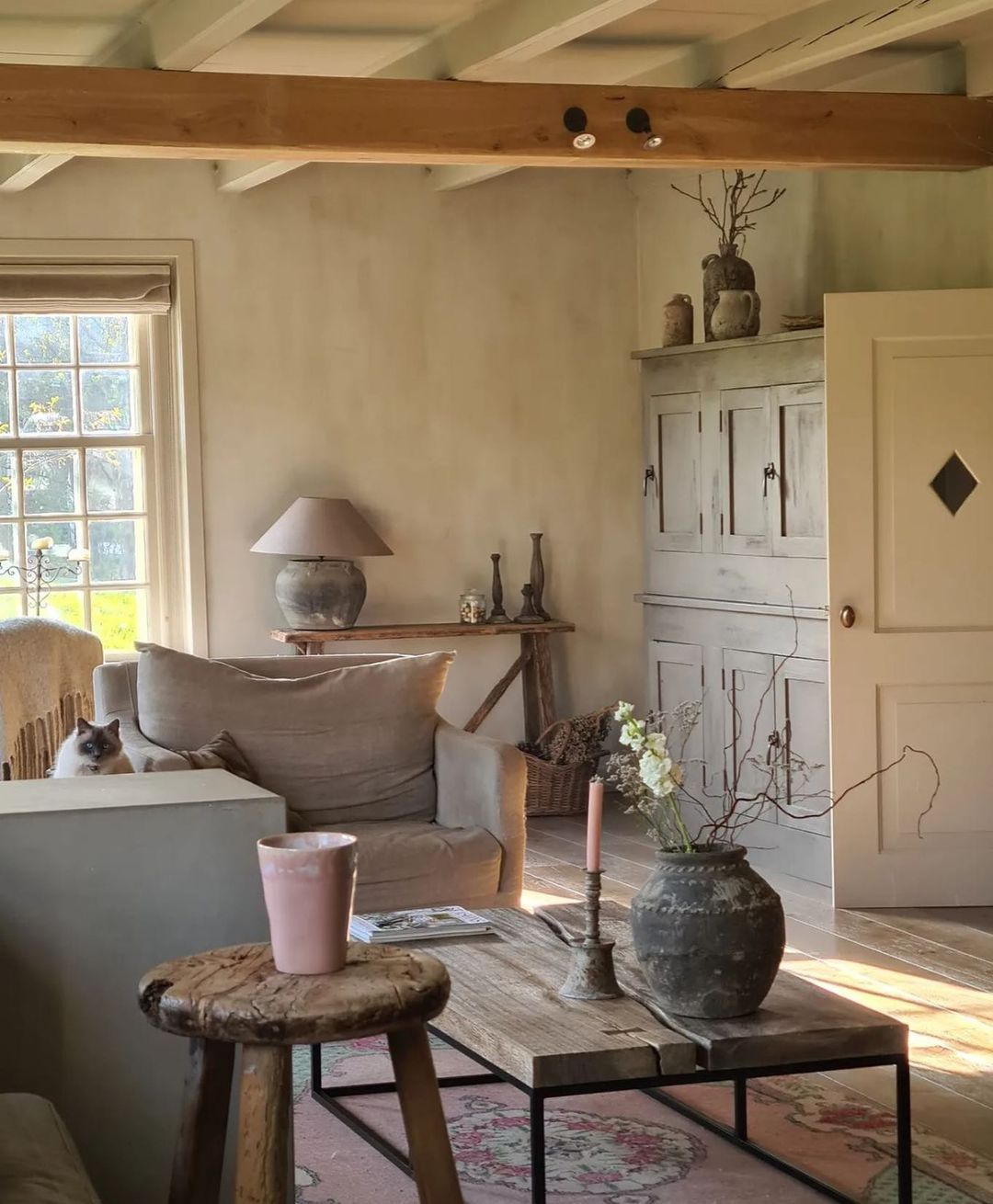
Exudes warmth and authenticity with its natural textures and reclaimed materials, creating a cozy and inviting atmosphere in any home. Rustic furniture from @charleygreyantiques
9. Industrial
The industrial furniture style draws inspiration from the raw elements of old factories and warehouses. While originally used in industrial settings, it has been modified to fit modern homes. Characterized by galvanized metal frames and a rugged appearance, this style became popular in the early 2000s and remains in vogue, especially in industrial lofts and homes with exposed ductwork.

Industrial furniture embraces raw materials and rugged aesthetics, crafting a unique blend of urban chic and utilitarian design for a bold and contemporary look. Industrial furniture from @almaenflordesigns
10. Scandinavian
Emerging from a fusion of Scandinavian influences, including Denmark, Norway, and Sweden, this style gained popularity from the 1930s to the 1950s. It experienced a modern resurgence and global expansion with the arrival of IKEA in many cities. Featuring simple, functional designs, Scandinavian-inspired furniture offers clean lines, lightweight modular options, and neutral, airy color palettes.


